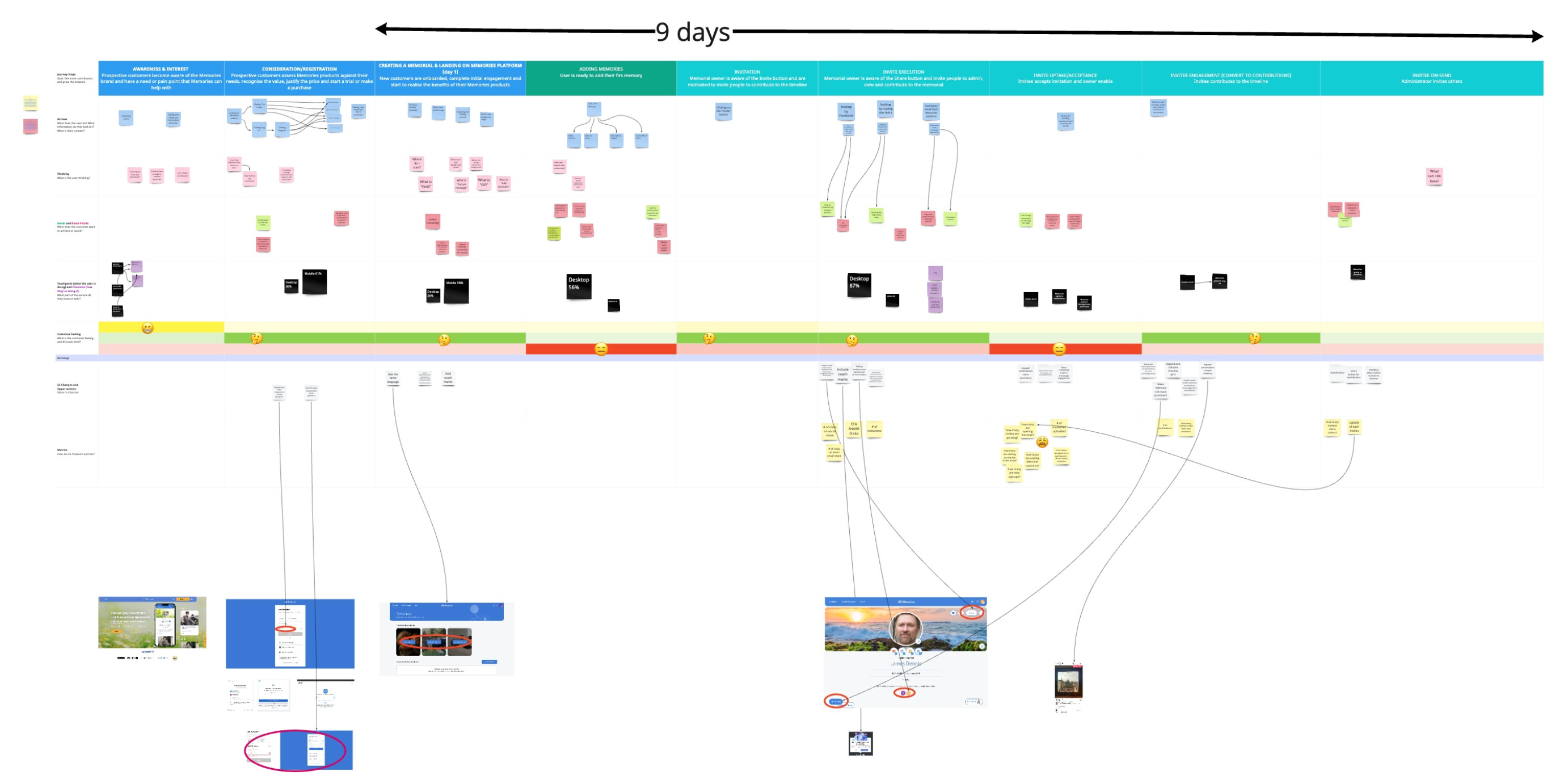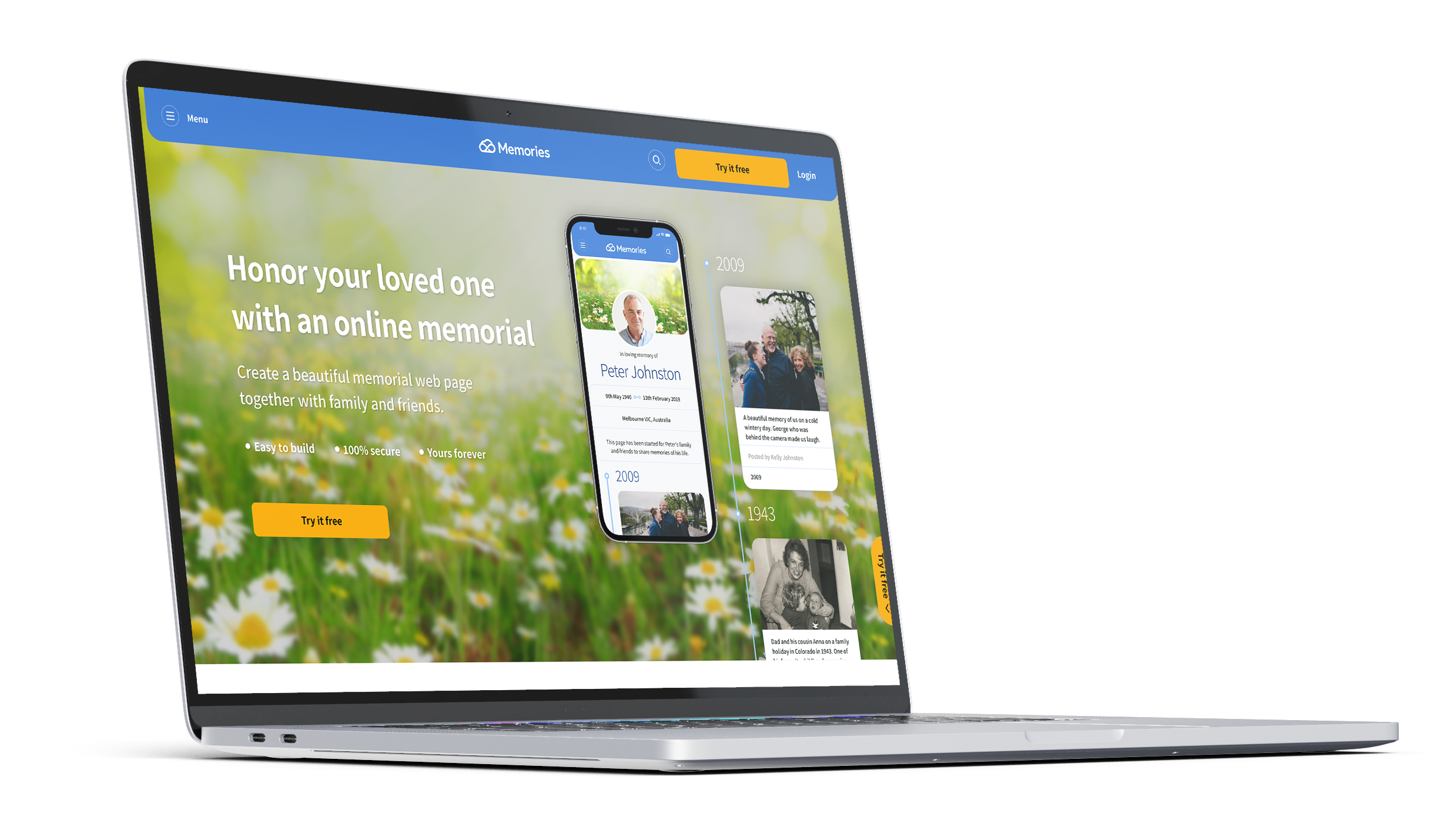
CLIENT
Memories
ROLE
Product designer (UX/UI, research)
LOCATION
Melbourne
DURATION
4 Months (2022)
oUTPUT
- Responsive onboarding flow
- Responsive home page redesign
TEAM
Head of product, PM, 2 Designers, 4 Devs, Copywriter, Marketing
Overview
In 2021, Memories moved to a paid-only model for its core product, the online memorial. This led to a significant drop in sign-ups, activations, and conversions.
We identified two key issues beyond pricing: many users struggled to understand the product’s value, which increased refund requests, and requiring upfront payment before users understood its purpose created hesitation, especially given the product’s sensitive nature.
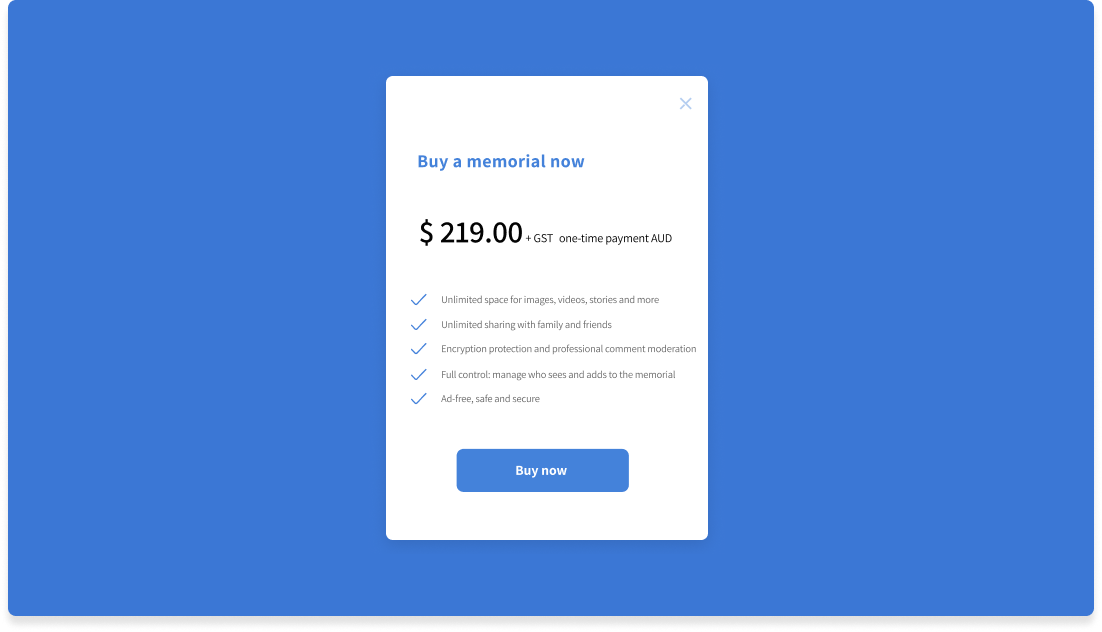
Goals
Double Diamond
Discovery
Kick-off workshop
Support Request Analysis
Funnel Analysis
User interviews
Ideation workshop
Features definition
Wireframes
Concept testing
Iterate
Synthesise insights
Persona
Journey map
Build
Test
Analyse & iterate
Define
Develop
Deliver
1. Onboarding Funnel Analysis
To identify where users were disengaging or encountering friction during onboarding, I collaborated with head of product to review the funnel data in Google Analytics.

key insights emerged:
- A significant drop-off occurred at the payment step, indicating user hesitation around financial commitment.
- Users spent a disproportionate amount of time on the questionnaire screen, suggesting that it was cognitively demanding or unclear, and potentially acting as a blocker in the flow.
- Support Request Analysis
We reviewed fortnightly support tickets and identified recurring issues around refunds and unmet user expectations.
key insight:
Many users signed up expecting to create a death notice, unaware that our product served a different purpose—clearly highlighting that our value proposition and website copy needed to be clarified.
- User Interviews
To understyand friccion points, purchase desiction, and possible areas of improvements.
key insight:
Value Proposition: Users expressed strong interest but needed to experience the service to understand its value before committing; a free trial was highly desired.
Onboarding: The existing onboarding felt lengthy, with some questions perceived as confusing or irrelevant.
Payment: The upfront payment and its tone felt too transactional during a time of grief; users were hesitant to commit to a one-time payment memorial when asked for credit card details before experiencing the value of the product.
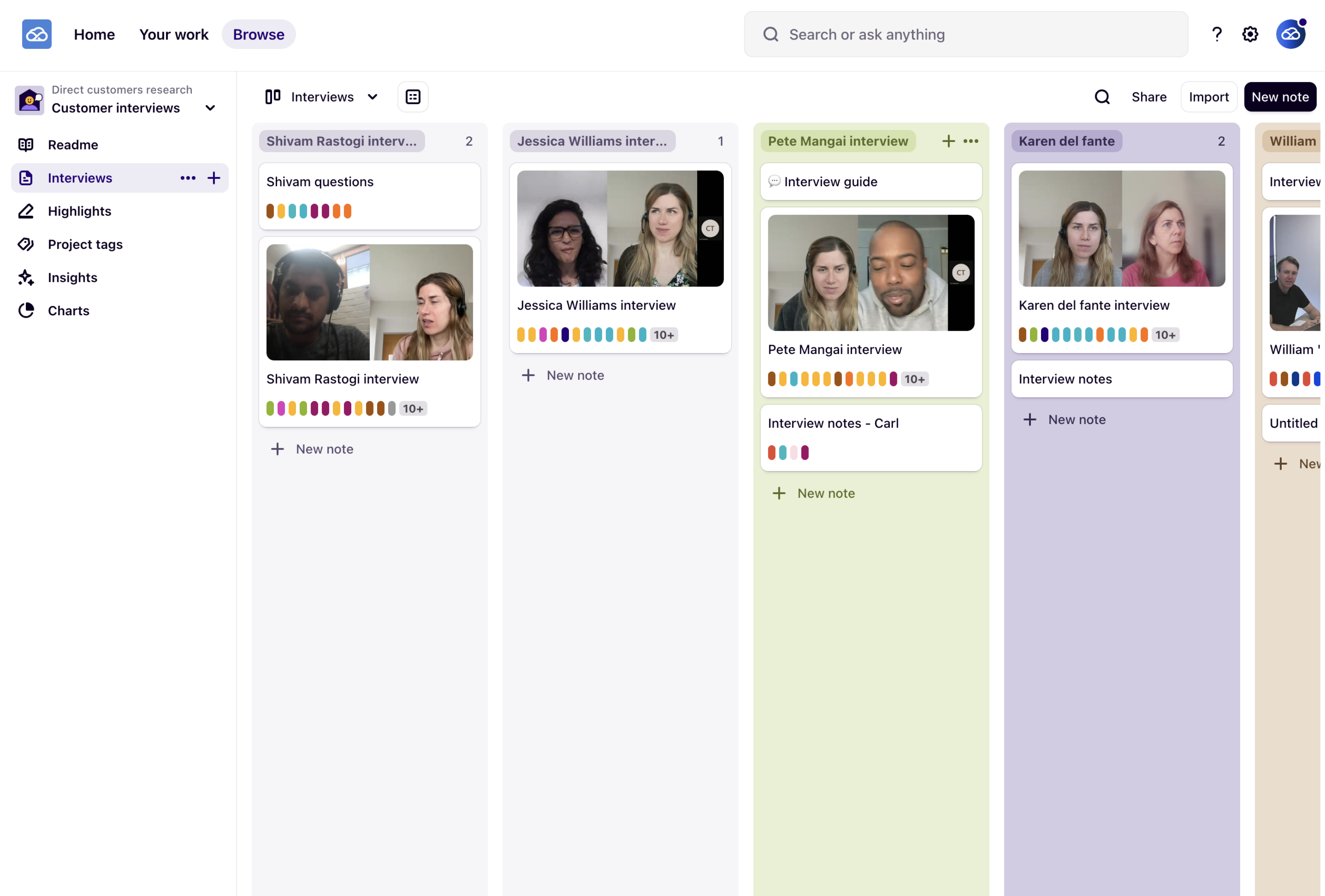
- Concept Testing Insights
We ran concept testing with six representative users using early mock-ups to validate assumptions and iterate quickly.
key insights:
Core values: Users appreciated features such as ease of use, collaboration, privacy, and emotional connection.
Clarity Language: Consistently using the term ‘online memorial’ in messaging significantly improved the perceived value proposition.
Empathetic Language: An empathetic and compassionate tone positively influenced purchase decisions and memorial creation.
Social Proof & Trust: Testimonials and brand partnerships enhanced credibility and comfort during a sensitive time.
CTAs: The “Try it free” button effectively indicated that there was a cost associated with the service without using overtly transactional language.
Pricing: Users appreciated the $219 AUD one-time fee but noted a preference for smaller, ongoing payments over subscriptions.
Onboarding Simplification: Removing three steps streamlined the process; example memorials provided clear inspiration for users.
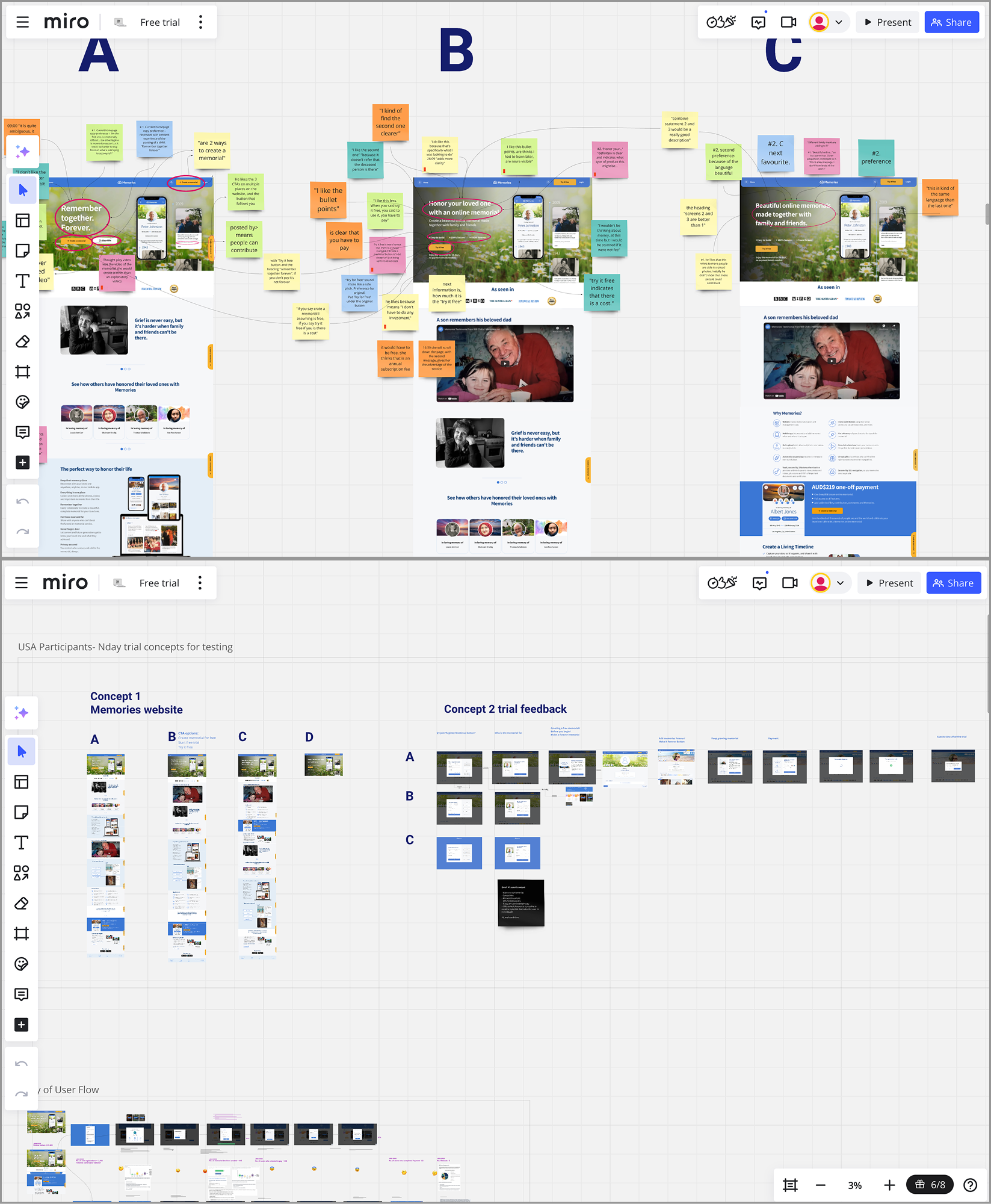
Memorial owner
User Persona
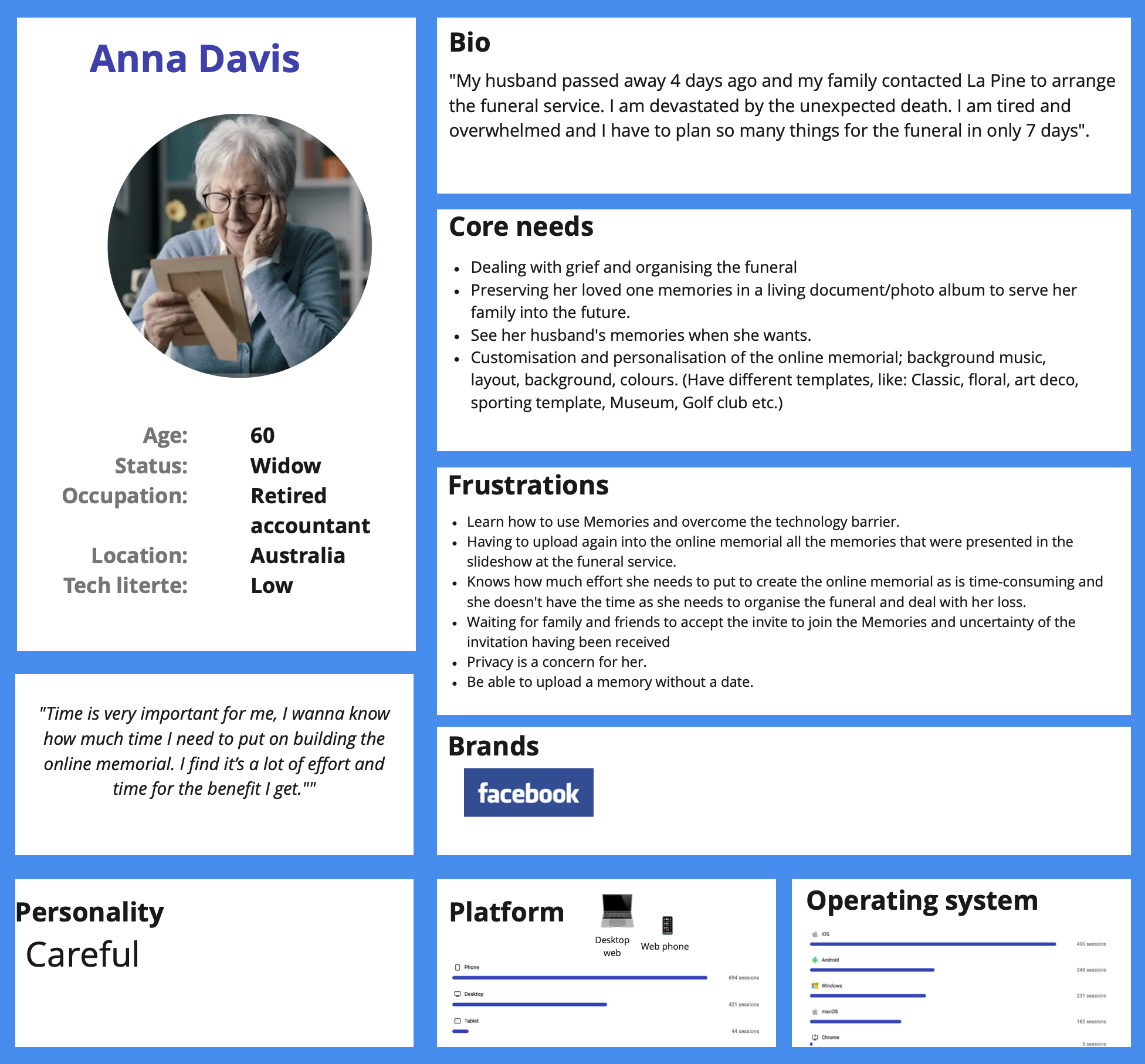
Memorial Owner — initiates and manages the memorial and invites others to contribute.
Proposed UX Redesign
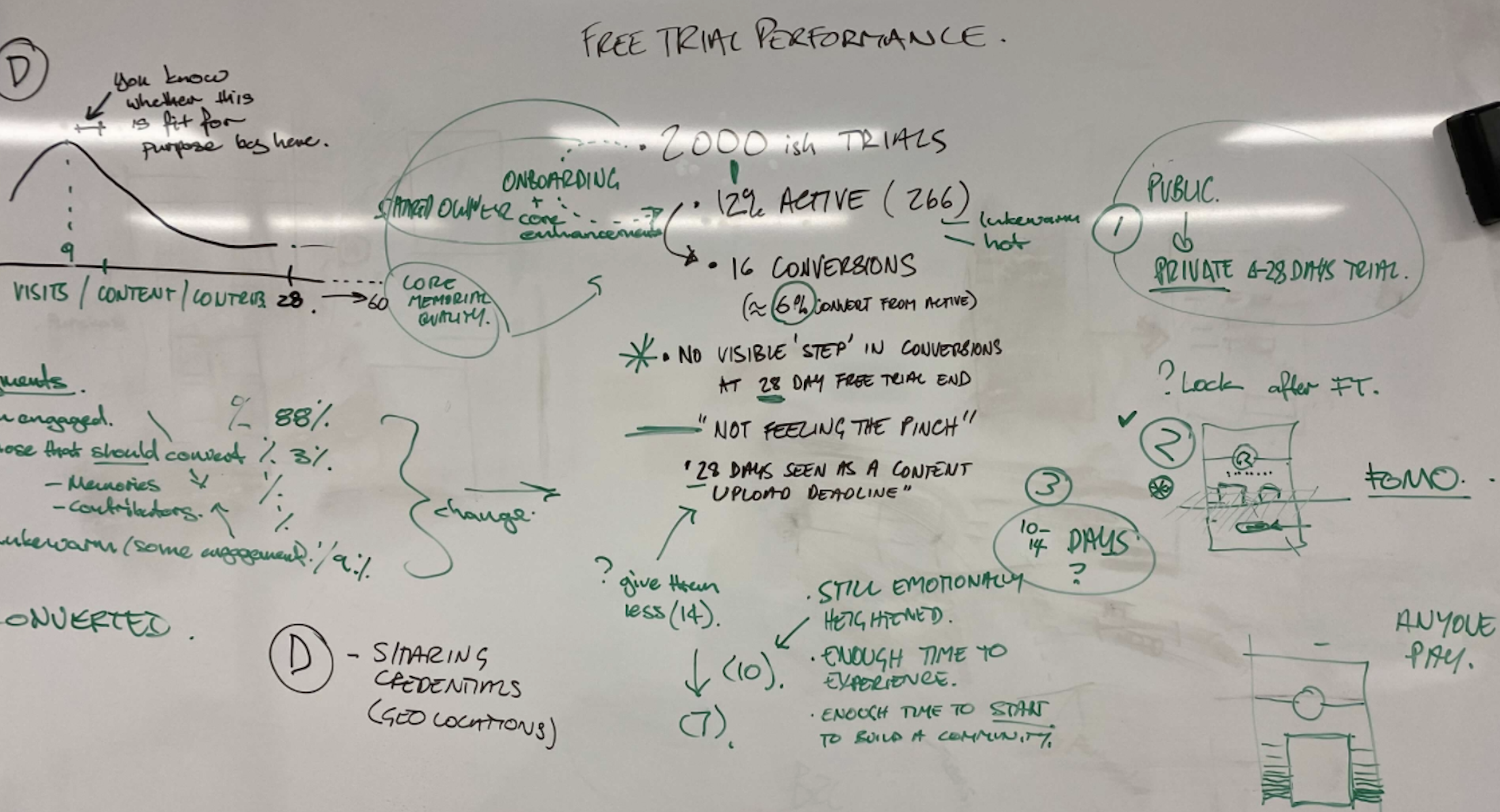
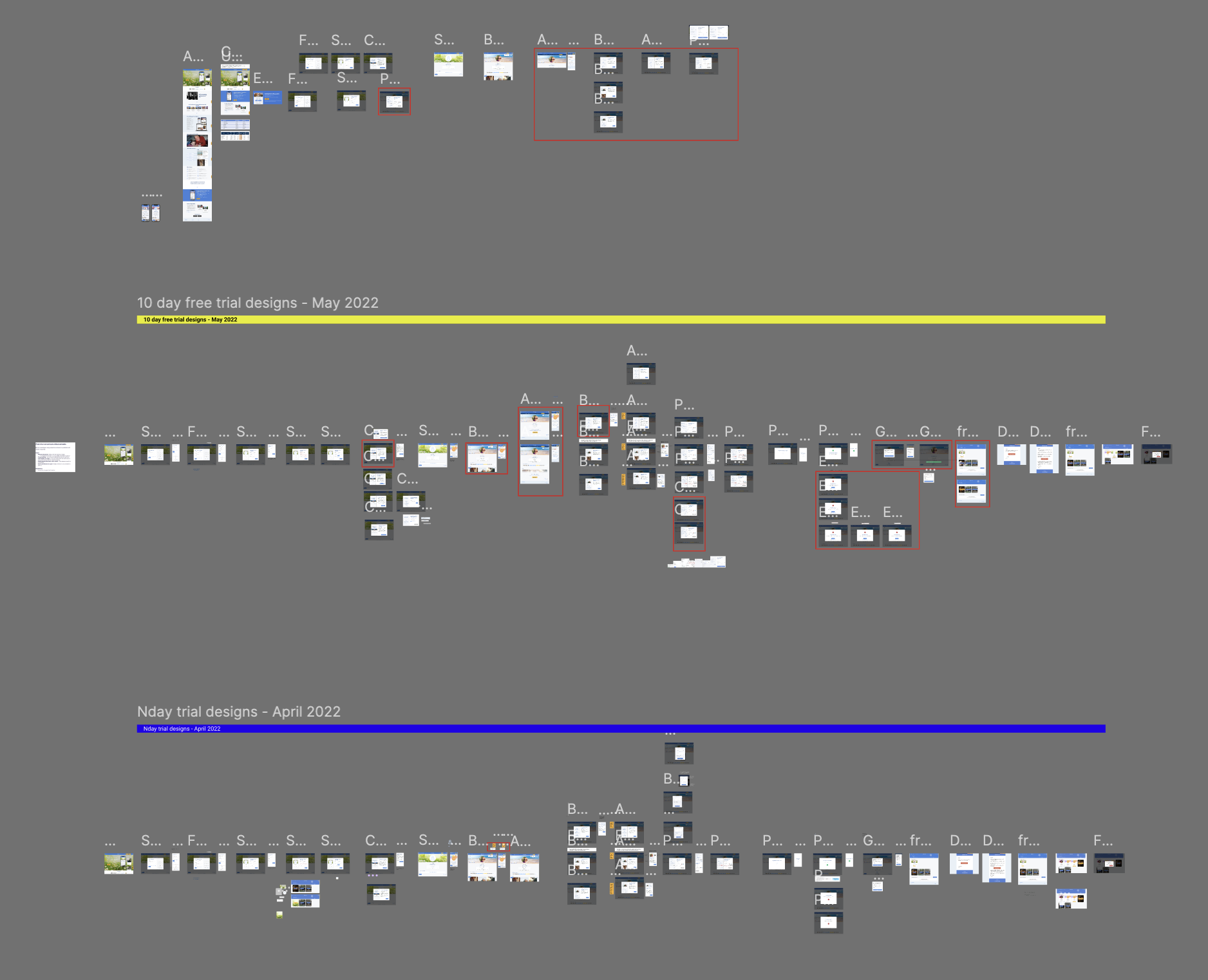
Redesigning thememorial onboarding
Enhancing user activation and conversion

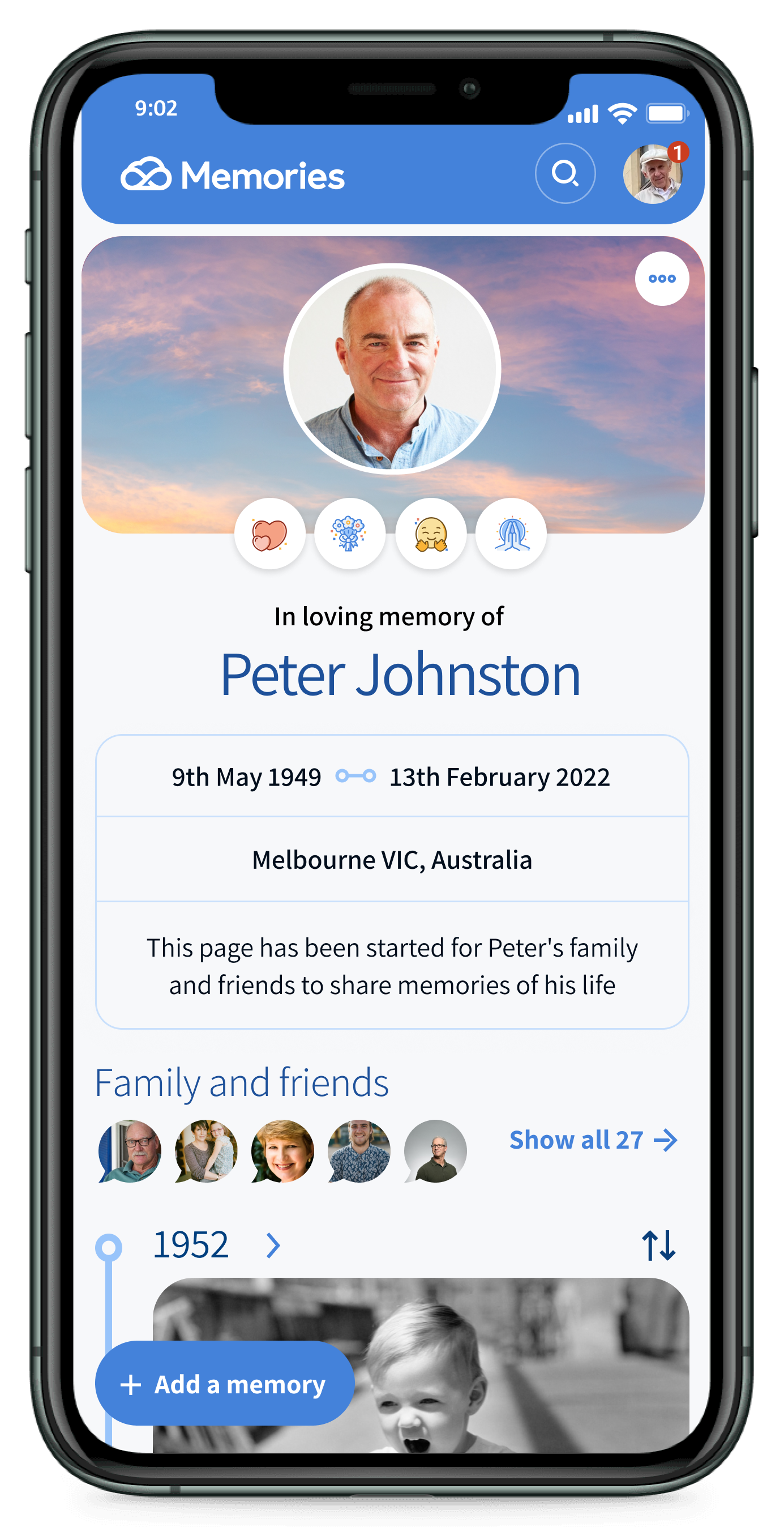
CLIENT
Memories
ROLE
Product designer (UX/UI, research)
DURATION
4 Months (2022)
TEAM
Head of product, PM, 2 Designers, 4 Devs, Copywriter, Marketing
LOCATION
Melbourne
oUTPUT
- Responsive onboarding flow
- Responsive home page redesign
Overview
In 2021, Memories moved to a paid-only model for its core product, the online memorial. This led to a significant drop in sign-ups, activations, and conversions.
We identified two key issues beyond pricing: many users struggled to understand the product’s value, which increased refund requests, and requiring upfront payment before users understood its purpose created hesitation, especially given the product’s sensitive nature.

Goals
1. Improve Sign-ups
Help users understand the benefits of the online memorial by testing and refining the value proposition.
2. Increase Memorial Activation/Creation
Simplify the onboarding process to make completing memorials easier and faster.
Double Diamond
Discovery
Kick-off workshop
Support Request Analysis
Funnel Analysis
User interviews
Ideation workshop
Features definition
Wireframes
Concept testing
Iterate
Synthesise insights
Persona
Journey map
Build
Test
Analyse & iterate
Define
Develop
Deliver
1. Onboarding Funnel Analysis
To identify where users were disengaging or encountering friction during onboarding, I collaborated with head of product to review the funnel data in Google Analytics.

key insights emerged:
- A significant drop-off occurred at the payment step, indicating user hesitation around financial commitment.
- Users spent a disproportionate amount of time on the questionnaire screen, suggesting that it was cognitively demanding or unclear, and potentially acting as a blocker in the flow.
- Support Request Analysis
We reviewed fortnightly support tickets and identified recurring issues around refunds and unmet user expectations.
key insight:
Many users signed up expecting to create a death notice, unaware that our product served a different purpose—clearly highlighting that our value proposition and website copy needed to be clarified.
- User Interviews
To understyand friccion points, purchase desiction, and possible areas of improvements.
key insight:
Value Proposition: Users expressed strong interest but needed to experience the service to understand its value before committing; a free trial was highly desired.
Onboarding: The existing onboarding felt lengthy, with some questions perceived as confusing or irrelevant.
Payment: The upfront payment and its tone felt too transactional during a time of grief; users were hesitant to commit to a one-time payment memorial when asked for credit card details before experiencing the value of the product.


- Concept Testing Insights
We ran concept testing with six representative users using early mock-ups to validate assumptions and iterate quickly.
key insights:
Core values: Users appreciated features such as ease of use, collaboration, privacy, and emotional connection.
Clarity Language: Consistently using the term ‘online memorial’ in messaging significantly improved the perceived value proposition.
Empathetic Language: An empathetic and compassionate tone positively influenced purchase decisions and memorial creation.
Social Proof & Trust: Testimonials and brand partnerships enhanced credibility and comfort during a sensitive time.
CTAs: The “Try it free” button effectively indicated that there was a cost associated with the service without using overtly transactional language.
Pricing: Users appreciated the $219 AUD one-time fee but noted a preference for smaller, ongoing payments over subscriptions.
Onboarding Simplification: Removing three steps streamlined the process; example memorials provided clear inspiration for users.
Memorial owner
User Persona
Memorial Owner — initiates and manages the memorial and invites others to contribute.

Proposed UX Redesign
After Six Weeks
Results
Following the launch of the free trial, improved onboarding and the Memories website, we saw significant results within six weeks:
- Improved Conversion Rate: +6%
- Increased Sign-Ups: +28%
- Higher Activation Rate: +12%


Redesigning thememorial onboarding
Enhancing user activation and conversion

CLIENT
Memories
ROLE
Senior product designer (UX/UI, research, strategy)
DURATION
4 Months (2022)
TEAM
Head of product, PM, 2 Designers, 4 Devs, Copywriter, Marketing
LOCATION
Melbourne
oUTPUT
- Responsive onboarding flow
- Responsive home page redesign
Overview
In 2021, Memories moved to a paid-only model for its core product, the online memorial. This led to a significant drop in sign-ups, activations, and conversions.

Goals
1. Improve Sign-ups
Help users understand the benefits of the online memorial by testing and refining the value proposition.
2. Increase Memorial Activation/Creation
Simplify the onboarding process to make completing memorials easier and faster.
3. Boost Conversions
Introduce a free trial to let users experience the platform before committing financially.
Double Diamond
Discovery
Kick-off workshop
Support Request Analysis
Funnel Analysis
User interviews
Ideation workshop
Features definition
Wireframes
Concept testing
Iterate
Synthesise insights
Persona
Journey map
Build
Test
Analyse & iterate
Define
Develop
Deliver
1. Onboarding Funnel Analysis
To identify where users were disengaging or encountering friction during onboarding, I collaborated with head of product to review the funnel data in Google Analytics.

key insights emerged:
- A significant drop-off occurred at the payment step, indicating user hesitation around financial commitment.
- Users spent a disproportionate amount of time on the questionnaire screen, suggesting that it was cognitively demanding or unclear, and potentially acting as a blocker in the flow.
- Support Request Analysis
We reviewed fortnightly support tickets and identified recurring issues around refunds and unmet user expectations.
key insight:
Many users signed up expecting to create a death notice, unaware that our product served a different purpose—clearly highlighting that our value proposition and website copy needed to be clarified.
- User Interviews
Despite the challenges of scheduling interviews in a grieving context, we spoke with six Memories users to understand friction points, purchase decisions, and opportunities for improvement.
key insights:
Value Proposition: Users expressed strong interest but needed to experience the service to understand its value before committing; a free trial was highly desired.
Onboarding: The existing onboarding felt lengthy, with some questions perceived as confusing or irrelevant.
Payment: The upfront payment and its tone felt too transactional during a time of grief; users were hesitant to commit to a one-time payment memorial when asked for credit card details before experiencing the value of the product.


- Concept Testing Insights
We ran concept testing with six representative users using early mock-ups to validate assumptions and iterate quickly.
key insights:
Core values: Users appreciated features such as ease of use, collaboration, privacy, and emotional connection.
Clarity Language: Consistently using the term ‘online memorial’ in messaging significantly improved the perceived value proposition.
Empathetic Language: An empathetic and compassionate tone positively influenced purchase decisions and memorial creation.
Social Proof & Trust: Testimonials and brand partnerships enhanced credibility and comfort during a sensitive time.
CTAs: The “Try it free” button effectively indicated that there was a cost associated with the service without using overtly transactional language.
Pricing: Users appreciated the $219 AUD one-time fee but noted a preference for smaller, ongoing payments over subscriptions.
Onboarding Simplification: Removing three steps streamlined the process; example memorials provided clear inspiration for users.
Memorial owner
User Persona
Memorial Owner — initiates and manages the memorial and invites others to contribute.

Proposed UX Redesign
1. Website Enhancements:
- Refined website copy to be more supportive, reassuring, warm, and empathetic.
- Introduced softer visual elements and calming colours.
- Clearly emphasised core benefits: easy setup, private & secure, collaborative, one-time payment.
2. Introducing a Free Trial:
- Eliminated upfront payment, launching a 28-day free trial.
- Added prompts highlighting memorial and trial benefits throughout the user journey.
- Clearly outlined trial terms to manage expectations.
- Presented a memorial summary pre-payment to showcase its built value.
After Six Weeks
Results
Following the launch of the free trial, improved onboarding and the Memories website, we saw significant results within six weeks:
- Improved Conversion Rate: +6%
- Increased Sign-Ups: +28%
- Higher Activation Rate: +12%


Iterations
Based on ongoing analysis of user feedback and product metrics, we continuously refined the experience to better meet user and business needs.
- Reduced Free Trial Duration: Shortened from 28 to 14 days to encourage quicker conversion.
- Increased Pricing Visibility: Moved pricing information higher on the website for earlier clarity.
- Onboarding Product Explainer Video: Added to quickly convey value and features.
- Guided Onboarding: Implemented contextual tooltips for step-by-step user guidance.
